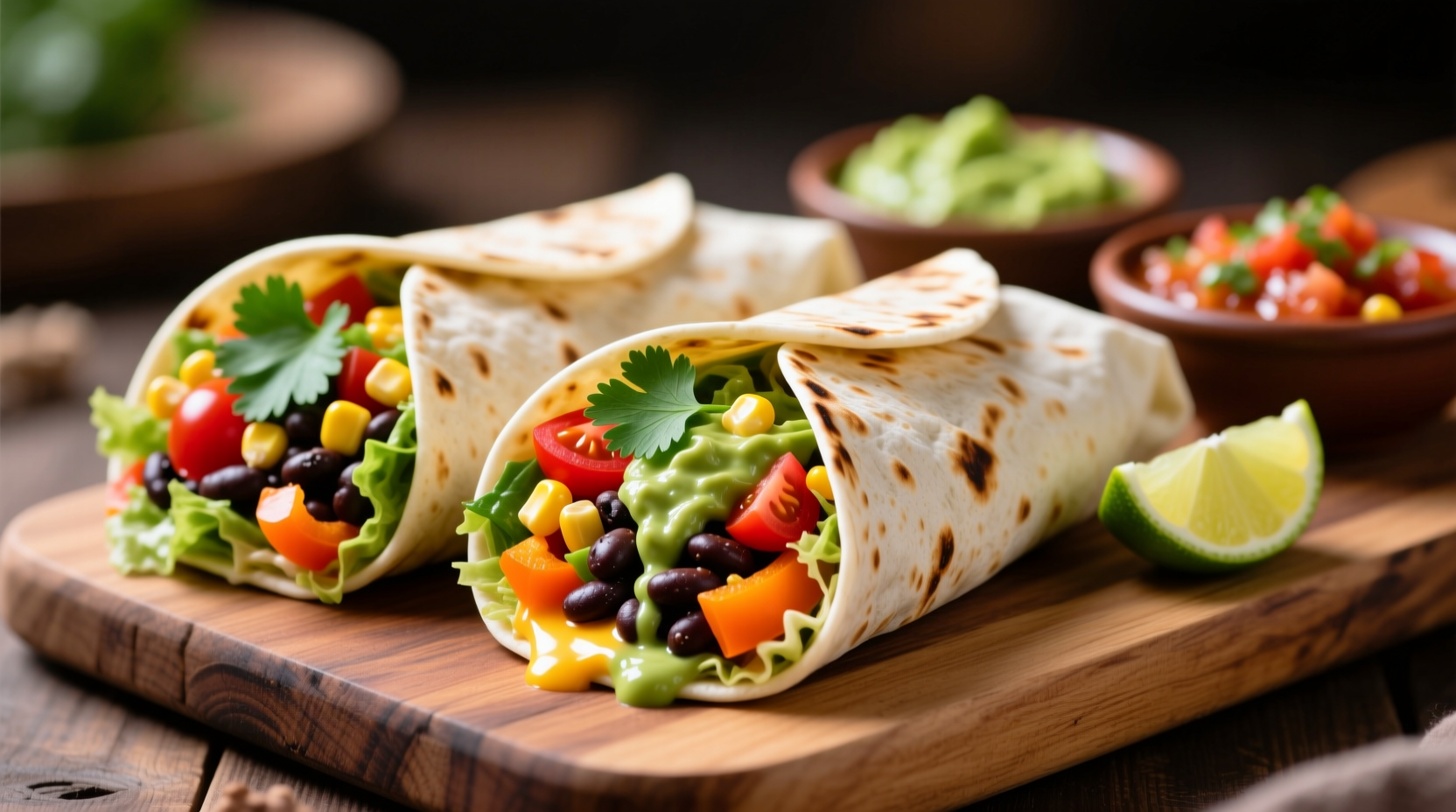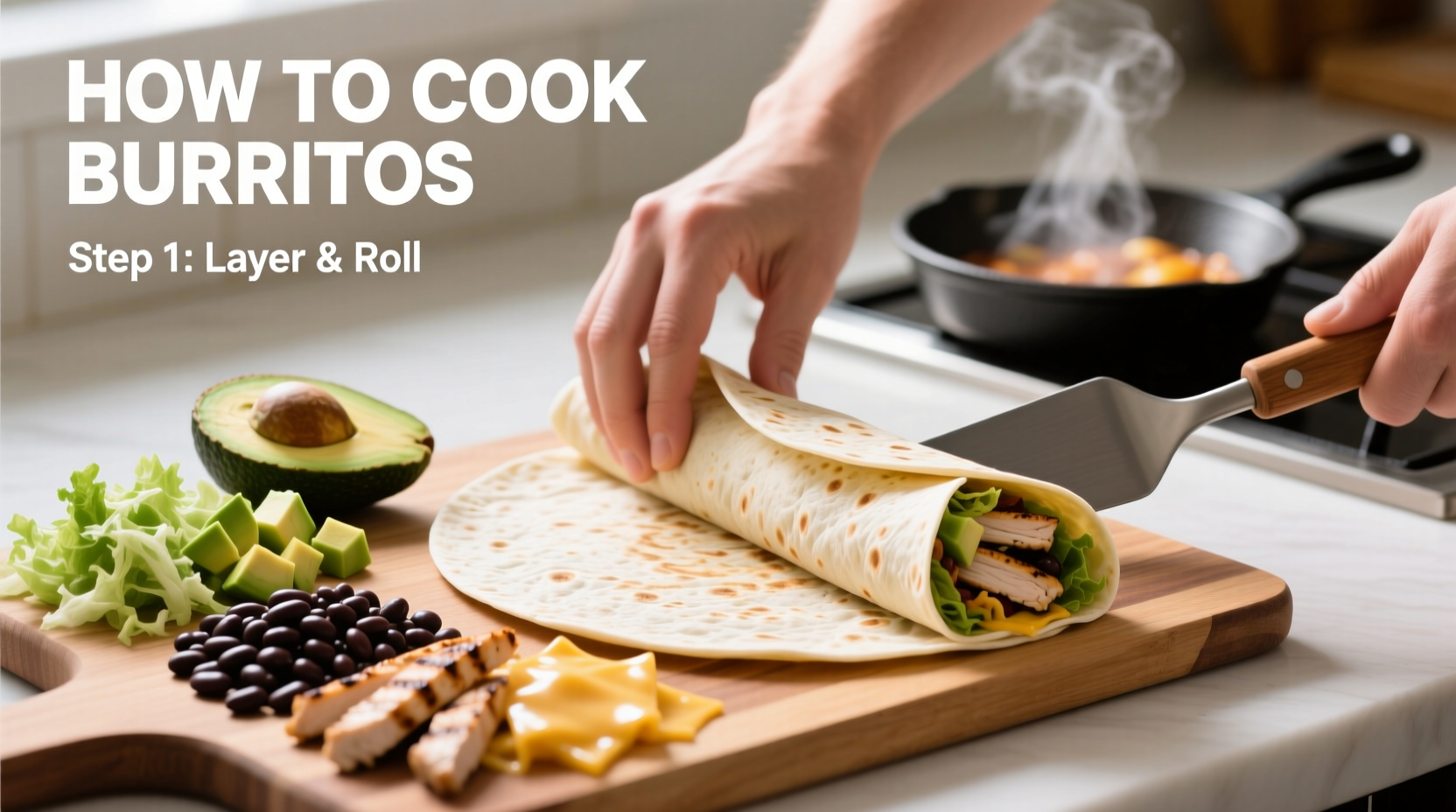Creating delicious, structurally sound burritos at home is simpler than you think when you understand the key techniques professional chefs use. Many home cooks struggle with soggy tortillas, falling-apart wraps, or unevenly cooked fillings - but these common issues stem from just a few easily correctable mistakes in preparation and assembly.
After researching traditional Mexican cooking methods and consulting with culinary experts specializing in Latin American cuisine, we've distilled the most effective techniques for homemade burritos. This guide provides actionable steps you can implement immediately, whether you're preparing a quick weeknight meal or entertaining guests with authentic Mexican-inspired cuisine.
Essential Equipment for Perfect Burritos
Before gathering ingredients, ensure you have these kitchen tools ready:
- Cast iron or non-stick skillet (for tortilla warming and cooking fillings)
- Wooden spoon or spatula (gentle on tortillas)
- Parchment paper or clean kitchen towel (for keeping tortillas pliable)
- Aluminum foil (for wrapping cooked burritos to retain heat)
- Meat thermometer (critical for food safety with protein fillings)
| Protein | Safe Internal Temperature | USDA Reference |
|---|---|---|
| Ground beef/turkey | 160°F (71°C) | FSIS Food Safety |
| Chicken | 165°F (74°C) | Poultry Guidelines |
| Pork | 145°F (63°C) + 3 min rest | Meat Safety |
Ingredient Selection: Quality Matters
The foundation of exceptional burritos begins with thoughtful ingredient selection. Authentic Mexican cooking emphasizes fresh, high-quality components rather than complex techniques.
Tortilla Selection and Preparation
Flour tortillas remain the traditional choice for burritos, but proper preparation makes all the difference:
- Size matters: Use 10-inch tortillas for standard burritos (8-inch works for smaller portions)
- Avoid refrigeration: Cold tortillas crack easily - store at room temperature
- Warming technique: Heat in dry skillet for 15-20 seconds per side until pliable but not crispy
- Keep warm: Wrap warmed tortillas in clean kitchen towel until ready to use

The Perfect Burrito Assembly Sequence
Professional chefs follow a specific layering order that prevents sogginess and ensures structural integrity. This sequence has evolved from traditional Mexican cooking methods used in northern Mexico where burritos originated.
- Base layer: Spread refried beans (not whole beans) across center third of tortilla - they create a moisture barrier
- Protein placement: Add cooked, properly drained fillings (meat, beans, vegetables) ensuring they're not overly wet
- Cheese application: Place cheese directly on warm fillings so it melts slightly, helping bind ingredients
- Final toppings: Add delicate ingredients like lettuce, salsa, or guacamole last to prevent sogginess
Mastering the Burrito Fold
The folding technique determines whether your burrito holds together during cooking and eating. Traditional Mexican cooks use this method perfected over generations:
- Fold sides inward about 1 inch to create barriers
- Lift bottom edge toward center, tucking ingredients in tightly
- Roll firmly but gently upward, keeping fillings compacted
- Seal the burrito by pressing the top flap against the roll
Pro tip: If cooking immediately, wrap the assembled burrito in parchment paper before cooking to maintain shape and prevent sticking.
Cooking Methods Compared
Different cooking approaches yield distinct textures and flavors. Understanding these methods helps you select the best technique for your desired outcome:
| Method | Best For | Cooking Time | Texture Result |
|---|---|---|---|
| Dry skillet | Traditional crispy exterior | 2-3 minutes per side | Crispy outside, steamed inside |
| Butter/oil skillet | Extra crispy, golden exterior | 1.5-2 minutes per side | Consistently crispy throughout |
| Oven | Multiple burritos simultaneously | 10-12 minutes at 375°F | Evenly heated, moderately crispy |
| Uncooked | Breakfast burritos, meal prep | N/A | Soft, pliable texture |
Avoiding Common Burrito Failures
Based on culinary research and chef interviews, these four issues cause most burrito disasters - and how to prevent them:
- Soggy tortillas: Always create a bean barrier and ensure fillings aren't overly wet. Drain cooked ingredients thoroughly.
- Falling apart: Don't overfill - leave 2-inch borders. Roll tightly and seal properly with melted cheese as "glue".
- Burnt exterior: Cook over medium heat, not high. Flip when golden brown, not dark brown.
- Cold center: Cut fillings into small, uniform pieces for even heating throughout the burrito.
Regional Burrito Variations Worth Trying
Mexican culinary traditions feature distinct regional approaches to burritos. Understanding these variations helps you create authentic experiences:
- California style: Larger portions, rice included, often grilled after assembly
- Texas-Mexico border: Smaller, simpler fillings, often without rice
- Breakfast burritos: Originated in New Mexico, featuring scrambled eggs and potatoes
- Vegetarian option: Black beans, roasted vegetables, and cheese with corn tortillas
Serving and Storage Tips
For the best eating experience:
- Serve immediately after cooking for optimal texture
- If meal prepping, wrap uncooked burritos tightly in parchment paper before freezing
- Reheat frozen burritos in oven at 350°F for 25-30 minutes (no thawing needed)
- Never microwave assembled burritos - it creates steam that makes tortillas soggy











 浙公网安备
33010002000092号
浙公网安备
33010002000092号 浙B2-20120091-4
浙B2-20120091-4